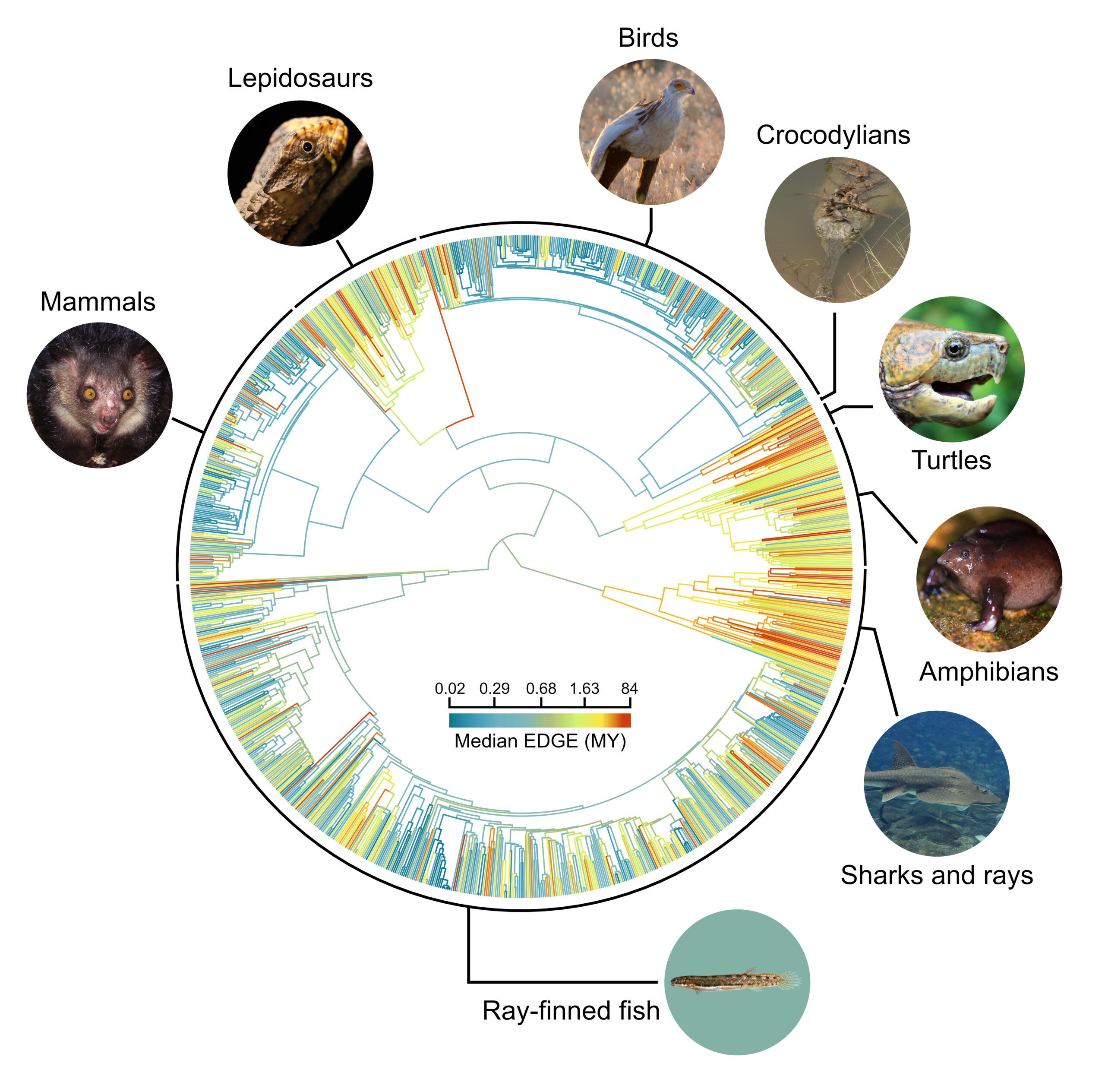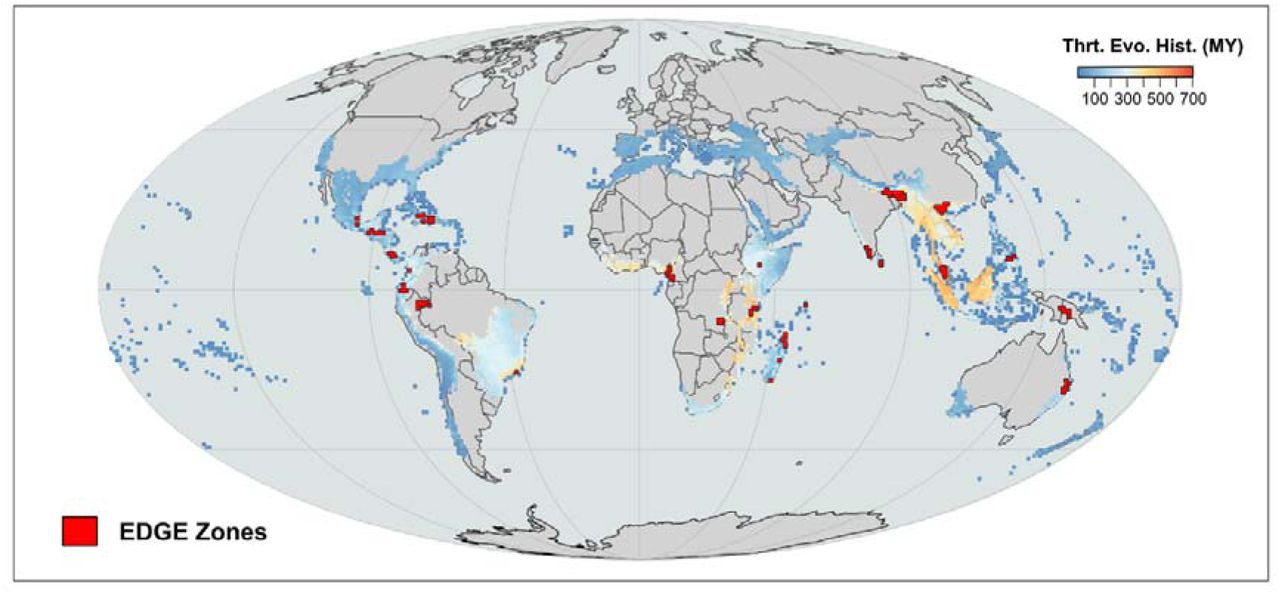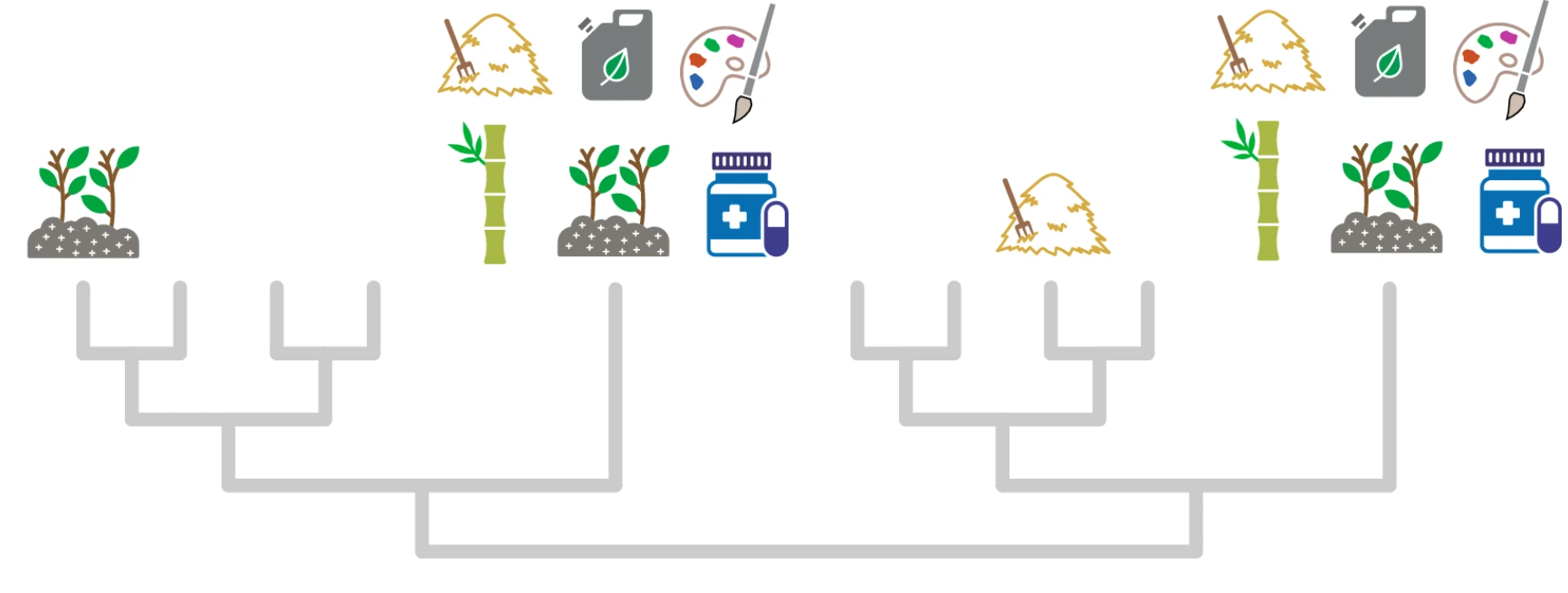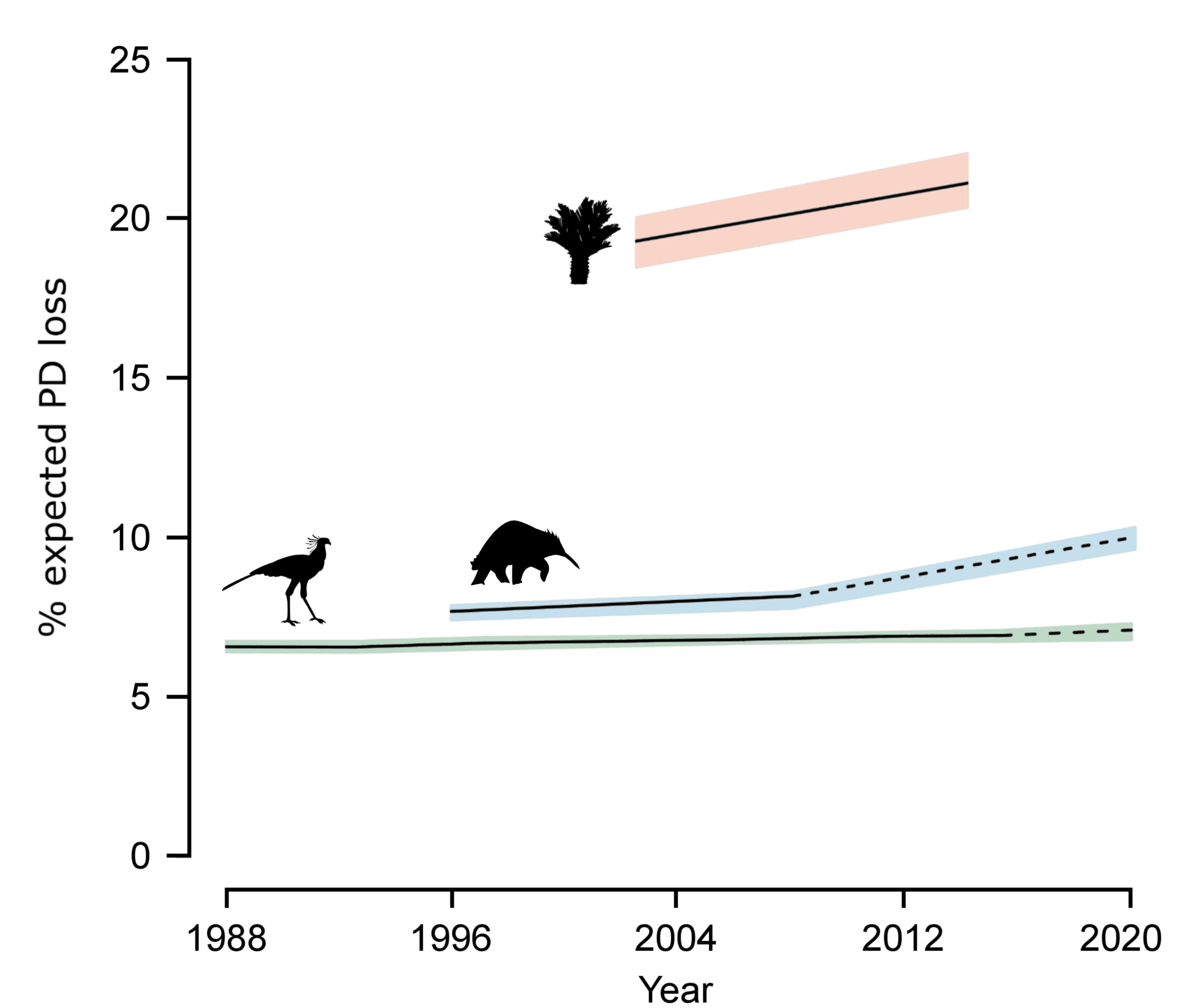We use EDGE Lists to identify priority species and EDGE Zones to highlight priority regions. Our team, in collaboration with leading scientists from around the world, strives to use the latest research to underpin our priority setting for conservation practice and policy.
EDGE Lists
EDGE Lists are our main tool for prioritising threatened species for conservation action. EDGE Lists comprise species that are highly evolutionarily distinct and threatened with extinction, and have been created for amphibians, birds, mammals, ray-finned fish, reptiles, sharks and rays, freshwater crayfish, conifers and cycads, and flowering plants. EDGE Lists are updated each year and are available, alongside an explanation of how EDGE Lists are made, here.
We are constantly working to expand the scope of EDGE Lists to encompass overlooked groups, particularly invertebrate groups, towards EDGE Lists for the entire Tree of Life.

EDGE Zones
EDGE Zones were originally proposed in 2013 as highly irreplaceable areas containing disproportionately large amounts of EDGE amphibian and mammal species. We have since developed this concept to identify EDGE Zones—areas comprising large amounts of unique and threatened evolutionary history—for all terrestrial vertebrates (see here for more information).
We are exploring how these EDGE Zones relate to other features of conservation importance, such as the global protected area and Key Biodiversity Area networks and hoping to expand the concept to incorporate plants and marine and freshwater systems. We are interested in what conservation solutions are possible to preserve some of the most irreplaceable regions on Earth.

The Benefits of Conserving EDGE Species
EDGE Species are more than just weird and wonderful. They often possess rare or unique characteristics that are important for their ecosystems or that provide benefits to people. One major aspect of our research is to explore how conserving EDGE Species, and evolutionary history more generally, can safeguard the benefits that evolutionarily distinct species bring to their environment and to people. We have explored this with the world’s birds (see here) and continue to expand this research across the Tree of Life.

We have led the development of two biodiversity indicators, the Phylogenetic Diversity indicator and the EDGE Index, which can be used to monitor the status of the Tree of Life and EDGE Species through time. These indicators are used by the Intergovernmental Science-Policy Platform on Biodiversity and Ecosystem Services (IPBES) and the United Nations Convention on Biological Diversity (CBD) to monitor our progress towards halting extinctions and maintaining the benefits people receive from nature.

Predicting and Quantifying Extinction Risk
Extinction risk is an integral part of how we prioritise species for conservation action, yet good quality extinction risk data is available for only a small proportion of life on Earth. Accordingly, we strive to support research that can improve extinction risk information to broaden the scope, and improve the robustness, of EDGE prioritisations.
Ecological Research
Our EDGE Fellows undertake research projects around the world, often the first dedicated studies of their EDGE species. Their research provides novel insights into the distribution, ecology and behaviour of their focal species. These findings inform conservation actions for EDGE species. In addition, we support long-term conservation projects by EDGE alums and researchers on focal EDGE species and conduct ambitious expeditions to search for rare and elusive species on the EDGE of Existence.
The research published by our network of EDGE Fellows, alums and staff is available here.
Get Involved in EDGE Science
We are happy to work with anyone interested in using the EDGE lists or carrying out research that could benefit EDGE species. We can offer some supervisory support to Masters and PhD students who undertake projects related to EDGE, and we have ongoing collaborations with researchers around the world. If you are a student or researcher looking to undertake EDGE-related research, or would like to collaborate on any of our existing projects, please contact the EDGE team.
